By Tara Reddinger-Adams, Coach North Star Mountain Bike Guides and VIDA Mtb Series Coach and Ambassador
Mountain biking is a great life-long activity, but can sometimes seem intimidating. Here are a few tips for beginner and intermediate level riders to help you make the most out of your riding and gain some confidence on the trails.
Ride Flat Pedals
Riding clipped-in pedals can be great, but for developing good technique and learning skills nothing beats practicing with flat pedals. With flats there is no clipping in and out, so you don’t need to worry about how you are going to get a foot down when things go wrong. On flats you begin to understand the importance of riding with heavy feet and balanced weight, helping you to stay in control on the trails. Flats also make you learn techniques such as clawing the pedal to raise the rear wheel and make learning how to ride features less intimidating.
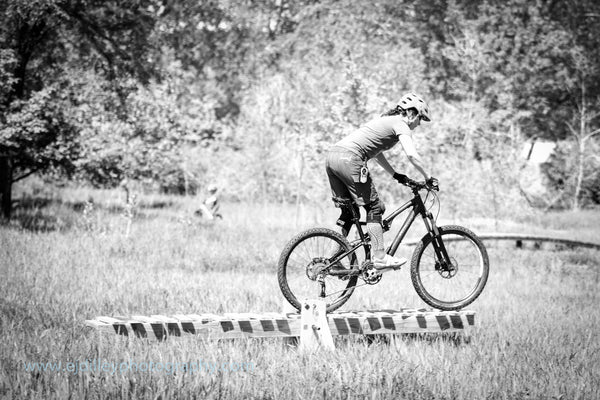
Tip: The pins on flats are a bit like a meat tenderizer and can really chew up your shins, wear tall socks or shin pads to protect your shins from accidental pedal strikes, until you get used to them.
Take Time to Session and Practice Skills
Spending time working on skills each week will greatly improve your riding and most skill work can be done just about anywhere - in the street, parking lot, dirt road, your yard, or on the trail. Think about your riding and what areas you want to improve upon and practice those riding techniques or skills.
Want to get better at cornering? Set up some cones to form a corner and practice leaning the bike and rotating your hips. Want to get better at wheel lifts? Practice your timing and coordination by lifting your wheel over a crack in the sidewalk or a 2x4.
What about that trail feature you want to clean, but haven’t yet? Stop and session it. Set your bike off the trail, walk the feature, think about what technique you will use, and envision yourself clearing the feature. Then ride the feature, stop, walk back, and ride it again. Once you get it, do it two or three more times to help solidify what you did, so the next time you come to it you’ll clear it with ease.
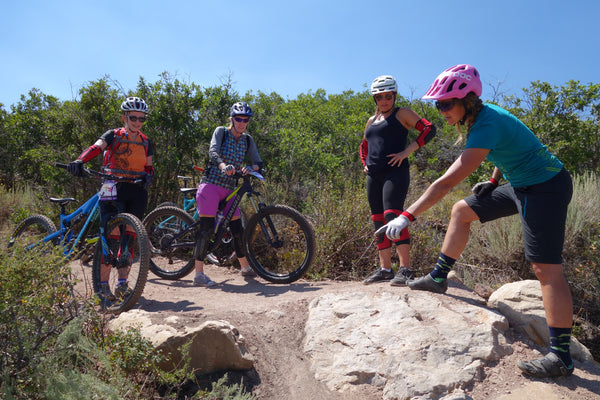
Take a Clinic
Skiing is a technical sport and for decades skiers have taken lessons to help them learn how to ski and improve their skills. Like skiing, mountain biking is a technical sport and that same philosophy of taking lessons applies to mountain biking. Learning fundamental riding skills will not only help you learn good form and technique but will also provide you with ways to improve your riding over the long run. Your instructor will be able to watch you and provide you with methods to improve technique that is specific to you, which in turn will boost your confidence on the trails.
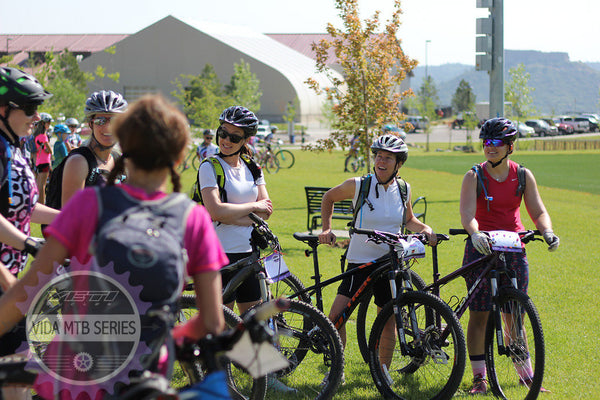
Ride with Others
Ride with riders who are both more and less skilled than you. By riding with more advanced riders, it allows you to see how others ride the trail. Don’t worry about being too slow, or not being advanced enough to ride technical features of the trail; everyone was a beginner at one time and your riding mates should understand.
Riding with less experienced riders allows you the opportunity to encourage and teach others, which helps you to better understand what you are doing. One of the best ways to learn to do something is to teach someone else how to do it. Riding with others also tends to create a supportive atmosphere in which riders help one another to progress their skills.
Take Care of Your Bike
There is nothing worse than experiencing a mechanical problem once you are out on the trail. A little preventative care can go a long way in helping your bike run in tip-top condition, and learning how to maintain your bike can be an extremely rewarding endeavor.
Before each ride do a quick bike check to make sure your
- tires have the right pressure for the riding conditions
- stem, handlebars, quick releases or thru-axels are tight
- chain is shifting
- brakes are working
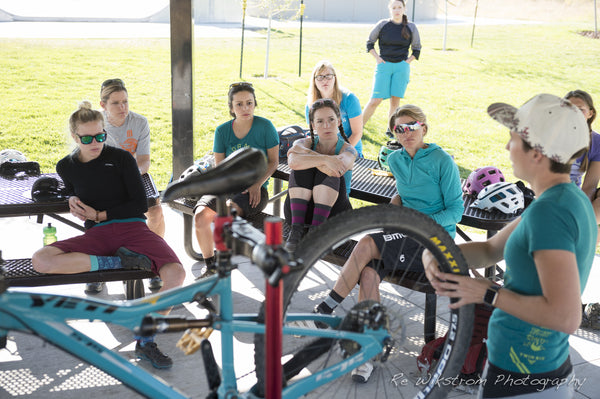
Riding trails can cause bolts to loosen up over time so it is a good idea to check pivot bolts and your crank bolt every few rides as well.
After each ride, take a few minutes to inspect your bike again and clean it off. Wipe down the stanchions on the fork and the shaft of the rear shock to prevent dust from entering the seals. Take a brush and knock any debris off the chain and pulleys and gently wipe down the chain with a rag. Lastly, lube your chain. The frequency with which you lube your chain depends on how often you ride and the riding conditions; in wet or muddy conditions you will need to clean and lube your chain more than in dry conditions. If you begin to notice sounds coming from your chain, such as squeaking or grinding, then it’s a good bet your chain needs some lube.
These basic maintenance tips are a great place to start. Many local bike shops and clubs offer maintenance classes and these are an awesome way to learn about how to change cables, adjust your derailleur and more.
About VIDA:
VIDA is more than just a clinic, we're a community. The VIDA MTB Series focuses on making you a better rider through increased confidence and an improved understanding of the relationship between you and your bike. If you've been wanting to descend the steeps, tackle tight switchbacks with ease, learn how to catch air, or become confident on wooden bridges and sounds, join us and discover the rider that exists within you. We hold destination day and weekend-long clinics in the best riding destinations in the Rocky Mountains

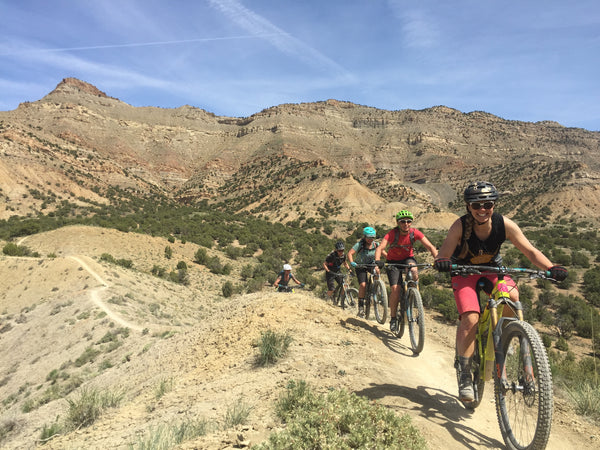
I am pretty much to your good work. Mountain bike training is most important before participate any cycling competition. It helps to grow your cycling skill. So if you are practice more training you will be great cyclist.
Leave a comment